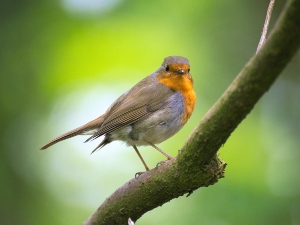
Many of us know how uncomfortable, painful and inconvenient injuries to the body are. If we become seriously injured this can become a real disadvantage, this is the case with animals too.
use their feet daily, they place all their weight on their feet and use them for more than we expect. If your bird is bleeding from its foot this can negatively affect its whole day, if you want to know how to help your bird then read on.
If you can give your bird first aid before taking it to the vet then this will help ease the pain and prevent infection before it gets to see a vet. Do this by applying pressure on the foot for a few minutes using a cloth. Reasons for this injury can be anything from predators to the environment.
Table of Contents
Bird bleeding from the foot:
Many birds are highly dependent on their feet for moving around and some even for swimming. A bird’s foot bleeding is a cause for concern.
First aid to stop the bleeding should be applied before the bird is taken to a vet. Apply slight pressure on the bleeding foot with a light cloth for a few minutes.
Try to determine the severity of the wound before moving the bird. Check to see how deep the wound goes. If it is safe to do so, wrap the bleeding foot with a light cloth to stop the bleeding and then take it to a veterinarian.
There are several reasons why a bird’s foot could be bleeding such as:
- Predator attack
- Flying into a barbed wire fence
- Animal traps that may not be meant for the bird
- Injury and infection from wading in dirty water with cutting objects
How long does it take for a bird to bleed out?
The first aid that you give to a bird’s bleeding foot should be effective within five minutes.
If the bird does not stop bleeding in that amount of time, rush it to a veterinarian for an emergency visit. If a bird bleeds for long it will die due to blood loss before the injury is treated.
How do you stop a bird’s nail from bleeding?
A bird bleeding from the toenail is not a life-threatening injury and can be safely handled by you at home.
An injury like this can happen when the owner is trimming the bird’s toenail, the bird walking on hard and slippery surfaces, and fighting or playing with another pet.
To stop the bird from bleeding, hold it safely and securely with a big towel, clean out the wound with a small amount of sterilized water, and then apply flour to the sides of the nail. If the bird does not get better within a few days, take it to the vet.
To avoid future injury, get advice on nail grooming and creating an environment that is friendly for bird feet from your local vet. Pet training may be needed if your bird gets injured during a fight with another pet
How do you know if a bird has internal bleeding?
The number one sign that would signal that a bird has internal bleeding is a change in poop color
Poop that is red, brown black and tarry would indicate that the bird has internal bleeding
Also check the bird’s abdominal area for dark colouration, this will help you determine if it has internal bleeding.
In addition, look out for any changes in behaviour, this can indicate distress. Are its eyes drooping? Does it look sleepy and motionless most of the time? Is the bird breathing heavily or strenuously? These are warning signs.
Any indication that the bird is bleeding internally calls for an immediate visit to the vet. You will get expert treatment and advice on how to handle the bleeding from your vet.
How do you know if a bird has a heat stroke?
The main symptoms of heat stroke in birds include panting, as a way to expel heat from their body, as well as holding wings away from the body to release heat
Other little-known signs include a loss of balance, disorientation, head tilting, drooling, an increase in heart rate, erratic movements, as well as tremors and seizures
How do you know if a bird is in pain?
A bird is usually alert and reactive to its environment, being on the lookout for any signs of danger to its life. A bird that is dull and unresponsive is one sure sign of experiencing pain.
It may also have its eyes half-closed or make a noise that communicates discomfort. It is best to take it to your local vet for examination and treatment.
Conclusion
In conclusion, if you find that your bird’s foot is bleeding then this can be the result of sharp objects cutting it from the environment or predators attacking the bird.
You can help reduce the bleeding by applying a clean cloth on the area and applying pressure, then take the bird to a vet.
Clean a bleeding nail then applying flour to both sides of the wound. If you find that the birds abdominal are has a dark colouration then it means that it is internally bleeding.
If you enjoyed this article then you may also be interested in other bird related articles. Here are some articles that you may be interested in: Baby bird breathing with mouth open, why and how to help, Can a bird with a broken wing survive?, Bird bleeding from its beak, what to do, Do birds smell bad?

